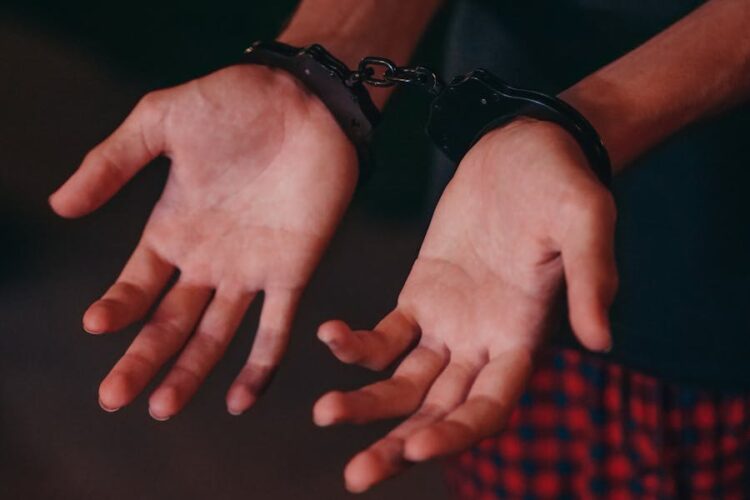Understanding how the criminal justice system works is essential for anyone interested in law, public safety, or simply being an informed citizen. The system is designed to uphold justice, maintain social order, and protect individuals’ rights. It involves a series of steps and processes that ensure those accused of crimes are treated fairly while victims receive justice.
From investigation and arrest to trial and sentencing, each stage of the criminal justice system plays a crucial role in maintaining the rule of law. Here is everything you need to know.
The Criminal Justice Process
The criminal justice process begins when a crime is reported or discovered. Law enforcement agencies, such as the police, are responsible for investigating the crime, gathering evidence, and identifying suspects. This stage is critical as it sets the foundation for the entire case. Officers and detectives collect physical evidence, interview witnesses, and conduct surveillance to build a strong case.
Once sufficient evidence is gathered, law enforcement may arrest the suspect. An arrest warrant, issued by a judge, is often required unless the suspect is caught in the act of committing the crime. After the arrest, the suspect is taken into custody and read their Miranda rights, which include the right to remain silent and the right to an attorney.
Following the arrest, the suspect undergoes booking, a process where personal information, fingerprints, and photographs are recorded. The suspect is then placed in a holding cell while awaiting their initial court appearance. This hearing, known as the arraignment, is where the charges are formally presented, and the defendant enters a plea of guilty, not guilty, or no contest.
Education and Careers in Criminal Justice
For those interested in pursuing a career in the criminal justice field, obtaining the right education is crucial. A bachelor of arts in criminal justice provides a comprehensive understanding of the criminal justice system, covering topics such as law enforcement, corrections, and the court system. This degree equips students with the knowledge and skills needed to succeed in various roles within the system, from police officers and detectives to probation officers and legal professionals.
The curriculum typically allows students to interact with members of legal communities, corrections, and law enforcement. Moreover, students are encouraged to visit law enforcement agencies, local courts, and correctional facilities. All these practical experiences help boost one’s understanding of how the criminal justice system works.
Graduates with a criminal justice degree can also pursue careers in corrections, working as probation officers, correctional treatment specialists, or in various roles within the prison system. These professionals play a crucial role in rehabilitating offenders and ensuring public safety. Additionally, opportunities exist in private security, forensic science, and criminal justice research, where a deep understanding of the system is essential.
The Trial Process
If a case goes to trial, it moves into the courtroom phase, where the guilt or innocence of the defendant is determined. The trial process involves several key steps, including jury selection, opening statements, presentation of evidence, witness testimony, cross-examination, closing arguments, and the jury’s verdict.
Jury selection is the first step in a trial. Both the defense and prosecution have the opportunity to question potential jurors and select those they believe will be fair and impartial. This process, known as voir dire, aims to create a balanced jury that can objectively evaluate the evidence.
Once the jury is selected, both sides present their opening statements, outlining the case and what they intend to prove. The prosecution goes first, followed by the defense. These statements provide a roadmap for the trial, helping jurors understand the key issues and evidence.
The heart of the trial is the presentation of evidence and witness testimony. The prosecution presents its case first, calling witnesses and introducing evidence to support the charges. The defense then has the opportunity to cross-examine these witnesses, challenging their credibility and the validity of the evidence. After the prosecution rests, the defense presents its case, following the same process.
After both sides have presented their cases, they deliver closing arguments. These statements summarize the evidence and persuade the jury to deliver a verdict in their favor. The jury then deliberates in private, weighing the evidence and deciding whether the prosecution has proven the defendant’s guilt beyond a reasonable doubt.
The trial concludes with the jury’s verdict. If the defendant is found not guilty, they are acquitted and released. If found guilty, the case moves to the sentencing phase, where the judge determines the appropriate punishment based on the severity of the crime and other factors.
Sentencing and Corrections
Sentencing is the process of determining the punishment for a convicted defendant. The judge considers various factors, including the nature of the crime, the defendant’s criminal history, and any mitigating or aggravating circumstances. Sentencing options range from fines and probation to imprisonment and, in some cases, the death penalty.
Probation is a common alternative to incarceration, allowing the offender to remain in the community under supervision. Probation conditions may include regular meetings with a probation officer, community service, drug testing, and restrictions on travel. Probation aims to rehabilitate offenders while minimizing the impact on their lives and reducing prison overcrowding.
For those sentenced to imprisonment, the corrections system takes over. Correctional facilities range from minimum-security prisons, which house non-violent offenders, to maximum-security prisons for those convicted of serious crimes. Inmates may participate in educational and vocational programs designed to prepare them for reintegration into society upon release.
Parole is another aspect of the corrections system, allowing inmates to serve the remainder of their sentence under supervision in the community. Parole boards evaluate inmates’ behavior and rehabilitation progress to determine eligibility for early release. Parole conditions are similar to probation, with the goal of supporting successful reentry and reducing recidivism.
Conclusion
The criminal justice system is a complex and multifaceted structure designed to maintain law and order while protecting individual rights. From the initial investigation and arrest to the trial, sentencing, and corrections, each stage plays a vital role in ensuring justice is served.
Understanding how the system works is essential for those pursuing careers in criminal justice, as well as for anyone seeking to be an informed and engaged citizen. By navigating the intricacies of the criminal justice system, society can work towards a more fair and effective means of upholding the rule of law.










